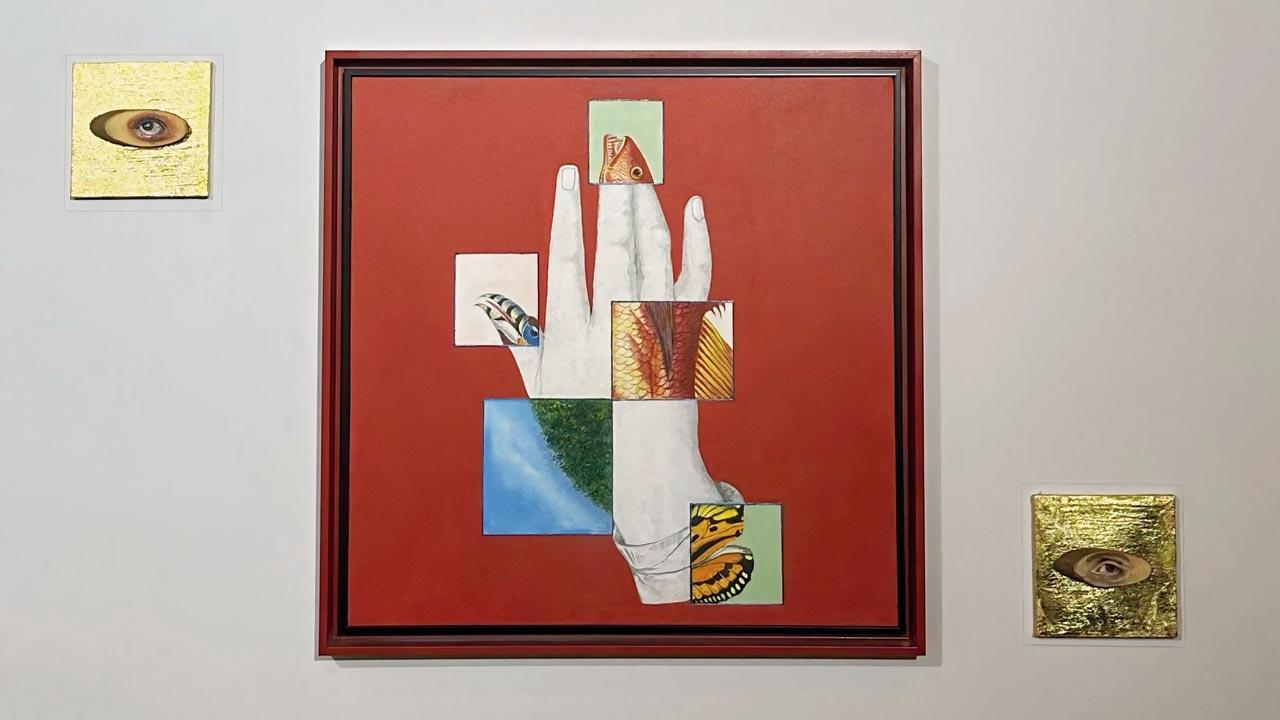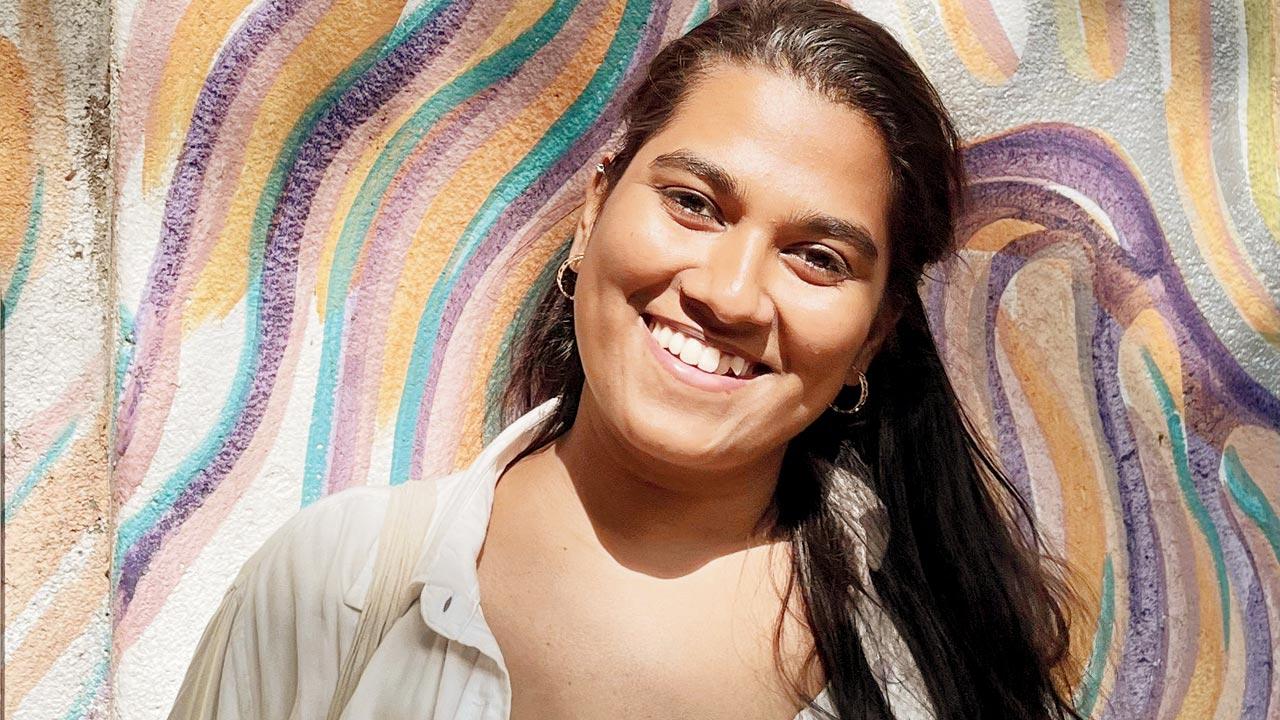Meet the first deaf woman in art conservation, who’s breaking systemic barriers too

The Eye’s Power in Deaf Life, a painting by Akanksha Kamble. Inclusive design isn’t just about compliance; it’s about changing mindsets, she says
Akanksha Kamble, a 24-year-old from Thane, is doing the unthinkable. She is set to become India’s first Deaf woman in art conservation and museum work—and the first person with a disability globally to be accepted into the prestigious School for Curatorial Studies in Venice, Italy. But her journey is more than a personal milestone; it’s a bold challenge to the systemic barriers Deaf professionals face in the arts, compounded by a daunting financial hurdle.
ADVERTISEMENT
“I am extremely elated to be accepted into this programme,” Kamble says excitedly through her interpreter. “My long-term goal is to be a curator in India as there are no PwD (Persons with Disability) curators in India,” she adds.
Growing up Deaf in India, Kamble’s educational journey was fraught with challenges. Communication was a constant hurdle. “Most educational institutions lack sign language interpreters and do not accommodate the needs of Deaf and Deaf-Blind individuals,” she explains. Without accessible resources like tactile sign language, captioning, or assistive technology, learning becomes a struggle.”
 Akanksha Kamble
Akanksha Kamble
Despite these obstacles, Kamble persevered, earning a graduate degree in Fine Arts with a specialisation in interior design from the prestigious Sir JJ School of Art. Thereafter she landed internships with art galleries and museums.
Kamble’s love for art began at seven, nurtured through painting competitions at Kala Children’s Academy. But it was later that she truly connected with art at a deeper level. “I realised how art lets me express emotions that words cannot. It became a safe space for comfort, healing, and self-expression,” she shares.
Kamble turned her challenges into advocacy through her award-winning photograph, The Deaf-Blind: Struggling for Inclusion, depicting a Deaf-Blind student before a chalkboard—a symbol of inaccessible education. “It’s my message to Deaf and Deaf-Blind individuals—you are talented and deserve a place in education and the arts,” she says. “It’s also a call to educators and policymakers to ensure accessibility.” She won the award in February 2025 at The Global Ability Challenge Photography by Youth4Jobs Foundation and NotJustArt, in partnership with the UN and UNESCO India.
Kamble’s acceptance into the Venice programme, an English-taught intensive course on contemporary visual arts and exhibition-making during the Biennale, reflects her commitment to inclusion. As a global gathering for aspiring curators, her presence will spotlight accessibility in curation.
Artist and educator Saumya Ananthkrishna praises Kamble’s achievement, emphasising the need for inclusivity in the arts and education. “When diverse artists get a platform, it enriches the creative landscape with fresh perspectives. Unfortunately, many Indian institutions lack inclusivity, disadvantaging students like Akanksha. Educational spaces must prioritise accessibility so all students can thrive.”
Kamble’s success can inspire the Indian art scene to rethink inclusivity, says Sanjay Nikam, artist and curator at Gandhi Films Foundation, Mumbai. “The industry is competitive and lacks inclusivity. We need a support system that increases visibility for artists with disabilities.”
Systemic accessibility barriers persist in India. With fewer than 300 certified interpreters for up to seven million Deaf individuals as per the Indian Sign Language Research & Training Centre (ISLRTC), communication gaps remain in education and workplaces. A 2024 report, Inclusion in Museums: Perspectives of People with Disabilities by MAP Bengaluru and ReReeti Foundation, highlights similar exclusion in museums, where visitors with disabilities were told, “This museum is not accessible for people like you.”
Kamble envisions a truly inclusive art world, with museums providing sign language interpretation, captions, and hiring disabled curators. “Inclusive design isn’t just about compliance; it’s about changing mindsets. Exhibitions must be conceived with inclusion, not as an afterthought,” she says. Advocating for education, she urges universities to provide interpreters. “I struggled through countless misunderstandings to get here. I want future Deaf students to have interpreters in class and role models in curators and professors.”
Kamble’s dream comes with financial hurdles. The high tuition and living costs in Venice, plus the lack of interpreter services, mean she must personally fund an Indian Sign Language interpreter. “This opportunity means nothing if I can’t fully participate,” she says.
A Bengaluru-based foundation has expressed interest in funding her training; however, she will be also looking to raise some amount through her crowdfunding campaign, Support the First Deaf Woman Curator from India, on Ketto. “Every contribution brings me closer to breaking another barrier,” she says.
Despite opportunities in arts, sports and adventure sports, financial barriers keep many PwDs locked out. Government initiatives exist, but real action is missing.
At a recent event, Empowering Inclusion: A Dialogue on Disability, Politics, and Economic Inclusion organised by NCPEDP, parliamentarian Shashi Tharoor stressed that true inclusion requires investment, not just symbolism. He called for transparent government grants, corporate sponsorships based on talent, and systemic reforms that treat inclusion as a right, not a privilege.
Until financial barriers are removed, PwDs will remain dependent on crowdfunding for opportunities that should be rightfully theirs.
From struggling in classrooms without interpreters to aspiring as an international curator, Kamble’s journey is inspiring the Deaf community and disability rights advocates across India, paving the way for a more inclusive art world.
<300
Certified interpreters for up to 7 million Deaf individuals as per the Indian Sign Language Research & Training Centre
 Subscribe today by clicking the link and stay updated with the latest news!" Click here!
Subscribe today by clicking the link and stay updated with the latest news!" Click here!







